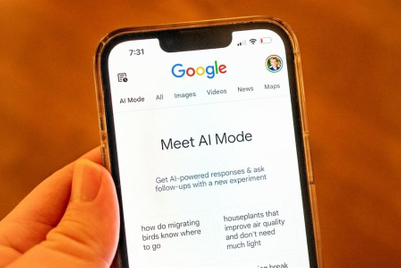
| PARTNER CONTENT |
A rising number of brands view customer engagement as critical to business growth, according to the latest report by Braze, a customer engagement platform.
Braze’s 2021 Global Customer Engagement Review compiled insights from 1300 VP+ marketing executives from B2B companies with an annual revenue of $10m+ across 10 global markets, including Singapore, Indonesia, Malaysia, Thailand, Japan, Australia, France, Germany, the UK and the US.
The report indexed respondents into three customer engagement maturity stages, ‘Activate’, ‘Accelerate’ and the top-performing ‘Ace’ brands, to help assess brands’ strategy, goals and likely success.
The business case for customer engagement
Many marketers might still struggle to measure customer engagement success, but a rising number of marketers are recognising that great ROI can be achieved if customer engagement is done right.
In fact, the 60% of marketing decision-makers who say their budgets will increase in the next 12 months report that customer engagement is one of the top three areas they plan to invest in. Breaking it down into regions, 66% in Asia plan to increase their marketing budgets this year, versus 61% and 52% in the US and Europe.

83% marketers who exceeded their revenue goals say they plan to increase investment in customer engagement in the new year, compared to just 23% of those who fell short, suggesting that successful brands recognise the importance of customer engagement when planning for the future of their organisations.
There is still a lot of work to be done. 74% marketers worry their customer engagement metrics aren’t translating into tangible business outcomes. Marketers from Asia are slightly more optimistic, with 65% concerned that their metrics don’t translate into tangible business outcomes, compared to 78% in the United States and 73% in Europe.
What are marketers doing well – and what aren't they?
Overall, marketers excel at experimenting, with the majority of brands employing rich, continuous testing based on evolving customers. Another thing they are getting right is multi-channel marketing, with 80% say they’re executing campaigns across multiple channels.
One area where brands need to improve is cross-team collaboration, with only 5% of brands saying they have permanent cross-functional teams in place. As customers are likely to be on different devices and platforms throughout their journeys, customer engagement risks being aimless and incoherent if there is little integration between different internal teams owning different parts of the customer experience.
Another area marketers need to work on is personalisation in real-time. Marketers might be personalising messages, but only 10% of those surveyed say they are doing it in real-time, raising the risk that they might be sending customised messages that seem irrelevant or out of date by the time recipients see them. Real-time personalisation is especially crucial in smartphone-first regions, where customers are likely to be inundated with messages from multiple companies, whenever and wherever they are.

What are 'Ace' brands doing right?
For those looking to invest effectively in customer engagement, they might consider taking a page from ‘Ace’ brands. According to the survey, 56% ‘Ace’ brands exceed their revenue goals, compared to 41% of ‘Activate brands’. Brands engaging in more sophisticated customer engagement strategies are also clocking 12x more purchases per user, 18x more average revenue per buyer, and 8x more buyers.
So what are ‘Ace’ brands doing that others aren’t?
Beyond the usual ‘implement, test and iterate’, ‘Ace’ marketers are committed to deeper levels of personalisation, data-driven optimisation, and cross-channel approach. They’re 62% more likely to use 3+ messaging channels (such as email, SMS, etc.) to engage with their customers, and 83% more likely to trigger campaigns with real-time data via APIs. This translates to greater customer engagement and business results. The survey finds that customers who receive messages in two channels are 73% more likely to make a purchase, with 4.2x increase in lifetime value, versus those who only receive messages in one channel.

Yet, it’s not only about leveraging as many channels as possible. Brands that take a cross-channel approach blending both in- and out-of-product messaging channels are found to have the best overall performance.
‘Ace’ brands also take a more active approach in adapting internal processes to customers’ needs. They boost 2x more continuous collaboration across departments and functions, and 2.2x more use of single company-wide definition of success for customer engagement,
Download the 2021 Global Customer Engagement Review for more insights.
_______
About Braze:
Context underpins every Braze interaction, helping brands like Zalora, Pomelo, Domino’s, HBO, Truemoney, Traveloka and Canva foster human connection across email, mobile, SMS, and web. Recognised a Leader in Forrester Wave™: Mobile Engagement Automation, Q3 2020, Braze is headquartered in New York with offices in Chicago, London, San Francisco, Singapore and Tokyo.




.jpg&h=334&w=500&q=100&v=20250320&c=1)
.jpg&h=334&w=500&q=100&v=20250320&c=1)
.jpg&h=334&w=500&q=100&v=20250320&c=1)
.jpg&h=334&w=500&q=100&v=20250320&c=1)
.jpg&h=334&w=500&q=100&v=20250320&c=1)







.jpg&h=268&w=401&q=100&v=20250320&c=1)

.jpg&h=268&w=401&q=100&v=20250320&c=1)
.jpg&h=268&w=401&q=100&v=20250320&c=1)